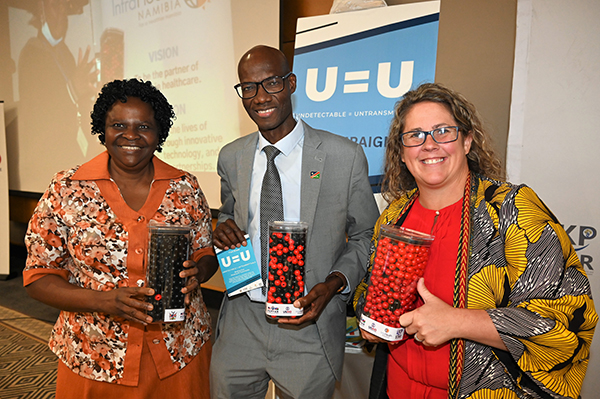Paheja Siririka
According to a recent study, more women than men were willing to accept money, goods and other gifts in exchange for sex, further aligning with the idea that “sex work is female”, which view is largely held by traditional communities whose value systems detest the industry.
This was highlighted in the HIV risk hotspot mapping and key population size estimation in nine priority geographical areas of the Namibia report. The report was conducted by KP-STAR to identify hotspots in specified areas of Oshikango, Oshakati, Otjiwarongo, Katima Mulilo, Rundu, Swakopmund, Walvis Bay, Gobabis and Keetmanshoop.
Key populations in this case would be persons such as men who have sex with men, sex workers and transgender people, who are at an elevated risk of contracting HIV.
The result from the study also confirms that a potential risk exists where men and women who engage in sex work may facilitate HIV cross-transmission with members of the general population. Oshikango and Katima Mulilo showed that more women were taking part in transactional sex.
“The introduction of U=U and more targeted mapping and identification of key populations is a game-changer for the health ministry and the KP programmes in the country to help refine and better target messaging and programming,” stated Laura Muzart, senior HIV prevention specialist at USAID.
U=U means that people with HIV who achieve and maintain an undetectable viral load—the amount of HIV in the blood—by taking antiretroviral therapy (ART) daily as prescribed cannot sexually transmit the virus to others.
According to the US Embassy’s statement, “the U=U campaign helps to reduce stigma and discrimination of people living with HIV, encourages them to test regularly for the virus, and adhere to the prescribed antiretroviral therapy regimen to reduce their viral load to an undetectable and thus safe level.”
Both HIV-positive people and their partners must understand that a suppressed viral load significantly reduces the risk of HIV transmission.
Together with the U=U campaign, the ministry launched its HIV Risk Hotspot Mapping and Key Population Size Estimation Report. This report was made possible through the United States Agency for International Development (USAID) and the U.S. President’s Emergency Plan for AIDS Relief (PEPFAR).
Based on the study, HIV services in hotspots show that a range of HIV services were assessed for existence at the hotspots, including condom and lubricant distribution, HIV testing, sex education and outreach services. Overall, the most prevalent HIV service was condom distribution – especially for male condoms – as well as the availability of condoms for sale at the hotspots.
Gobabis reported the most availability of HIV services. Lubricant availability was reported in only three of the nine PGAs, making it the most unavailable commodity. HIV testing services, as well as female condoms, were equally rare. Oshakati reported the highest availability of condoms for sale at hotspots as well as outreach activities. HIV services were seen to be generally low or absent at hotspots in Oshikango, Otjiwarongo, Swakopmund and Walvis Bay, which calls for intensified programming and service delivery.


